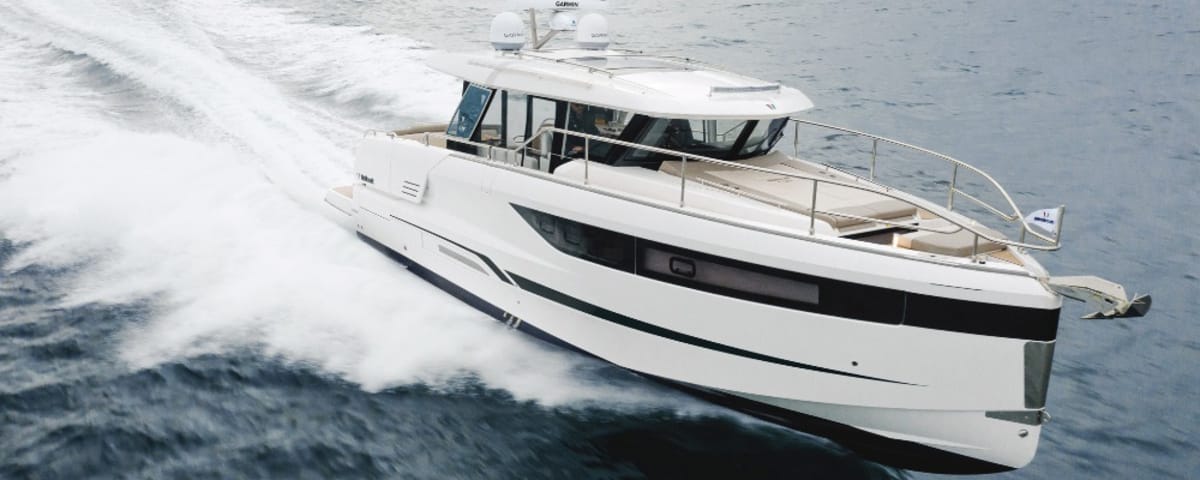Living on a Sailboat or Houseboat: A Lifestyle Choice That Attracts
Once seen as an eccentricity, the idea of living year-round on a boat now appeals to a diverse audience. Whether it’s to reduce expenses, escape big cities, or simply live differently, many people are taking the plunge. Living on a houseboat in the city, settling on a habitable sailboat in a marina, or navigating from anchorage to anchorage with a trawler: the possibilities are numerous, and the trend continues to grow.
This lifestyle choice, often driven by a desire for freedom, also reflects a desire for change. Change from routine, from traditional consumption patterns, and sometimes from the constraints of an increasingly inaccessible housing market. Because living on a boat is primarily about living with less: less space, fewer objects, less material attachment. But it’s also about living with more: more mobility, more light, more intensity.
This floating life is appealing because of its direct connection to nature. You live with the wind, the tides, the rain, the sun. Each day is slightly different. The view changes, as do the neighbors. The weather dictates the day’s schedule, and each departure from the port feels like a mini-adventure. Some people don’t sail much, but they still have the feeling of living “on the edge,” outside the norm, in a shifting territory. It’s not just a place to live; it’s a stance towards the world.
There’s also a form of ecological consistency. Many boats are equipped with solar panels, composting toilets, or rainwater harvesting systems. Some become completely energy self-sufficient. For others, it’s a gradual discovery, involving adjustments, DIY projects, and trial and error. But most find pleasure in this partial autonomy, in this ability to create their own ecosystem.
How Much Does It Cost? Which Boats to Choose?
Contrary to popular belief, this lifestyle is not reserved for millionaires. Of course, some yachts fitted out like lofts cost more than a Parisian apartment. But it’s entirely possible to live on board with a reasonable budget. A habitable sailboat from the 80s or 90s, in good condition, can be found for between €30,000 and €60,000. For those with a knack for DIY, a model to renovate can go for under €25,000, but you’ll need to budget time and money to restore it to a seaworthy and habitable condition.
For a more stable and spacious life, some opt for a trawler (motorboat with a large saloon), a Dutch barge, or even a houseboat. The cost then rises: between €70,000 and €200,000 depending on the case. In return, the living space is larger, sometimes close to an apartment of 40 to 50 m2, with separate rooms, real kitchens, and bathrooms. The houseboat is particularly popular on rivers and canals, especially around Paris, Lyon, or Strasbourg.
But the boat is not just a purchase. You also have to park it. An annual berth in a marina can cost between €1,500 and €7,000, depending on the location and size of the boat. In the Paris region, river parking can exceed €8,000 per year on the most central quays. In medium-sized towns, or in municipal ports, you can still find attractive rates: around €1,000 to €2,000 for a 10 to 12-meter berth.
Add to that the maintenance costs. An annual haul-out for antifouling, anodes, engine, and hull costs between €1,500 and €3,000 for a medium-sized sailboat. If you need to change a sail, rigging, or redo an electrical installation, the bill quickly adds up. Some calculate an overall monthly budget (maintenance + berth + insurance + energy + running costs) of around €600 to €1,000. This is generally much lower than rent in the city center, but it’s not free either.
Life on board also requires suitable equipment: batteries, converters, solar panels, marine refrigerators, forced-air heating (Webasto or Eberspächer type), mobile or satellite Internet… You also need to think about safety: life jackets, fire extinguishers, beacons, bilge pump, VHF. Many people equip themselves over time, according to their needs and budget. Others prefer to have everything ready from the start.
An Intense, Simple, and Demanding Life
What the figures don’t always say is the daily life. And that’s where it all happens. Life on board is both simple and intense. Gestures are slower, more conscious. Preparing a meal, showering, filling up with water, all take a little more effort than on land. But this effort is often seen as a way of reconnecting with what you do, what you consume, what you live.
Comfort exists, but it’s thought of differently. You live in a small space, which encourages sobriety. You have to like sorting, optimizing, reorganizing. Every object has its place, every centimeter counts. Yet many floating residents speak of an incredible sense of space. Because the real luxury is the view of the water, the circulating air, the changing light.
The constraints are real. Winter is a difficult time, especially on poorly insulated sailboats. Humidity, mold, cold coming in through the portholes. You have to heat efficiently without tripping the breakers. The most experienced put cork on the walls, install double glazing, use dehumidifiers. You also have to monitor the condition of the hull, moorings, batteries, and weather. A gust of wind can turn a peaceful night into a stressful one.
On the social side, it’s far from isolation. Ports are home to a micro-society of year-round boaters. People help each other, share tips, and meet on the pontoon for a drink or a helping hand. There is often more humanity in these small floating villages than in some stairwells. But it also depends on the location. In large tourist ports, you can feel lost among the day-trippers. Hence the importance of choosing your home port carefully.
Administratively, living on a boat as a primary residence is entirely possible, provided you register your life somewhere. Some do it via the town hall (with authorization), others via a relative. Having an address is still necessary for mail, social security, and taxes. You must also declare the boat as a residence with the Maritime Affairs (or VNF for inland waterways), and choose insurance suitable for year-round living on board.
Living on a boat is not just a choice of accommodation. It’s another way of inhabiting the world. It requires a certain discipline, a taste for effort, and sometimes a touch of madness. But it’s also a source of daily wonder, a more flexible, more fluid relationship with time. For those who taste it, it’s often a revelation. Not an easier life, but a more chosen life.
Enjoyed this post by Thibault Helle? Subscribe for more insights and updates straight from the source.


